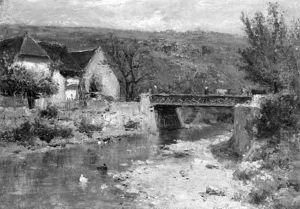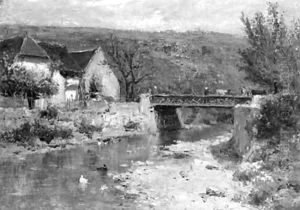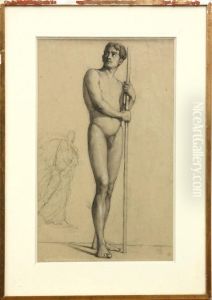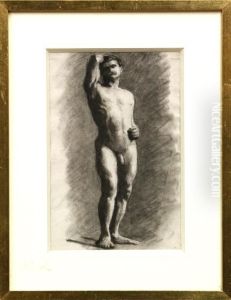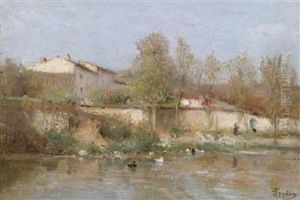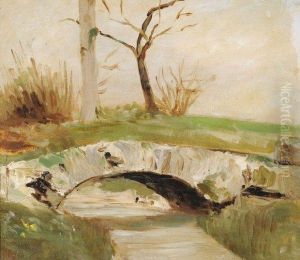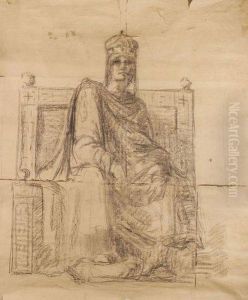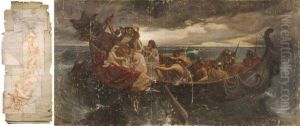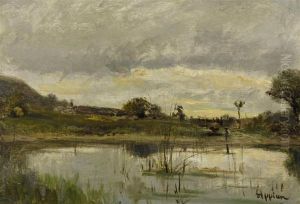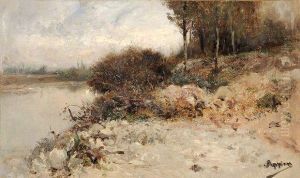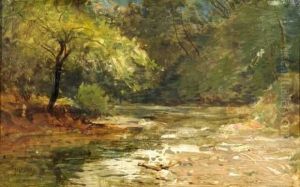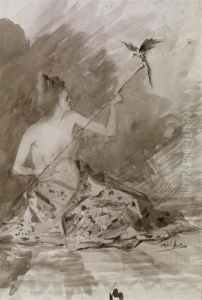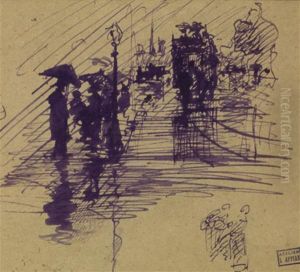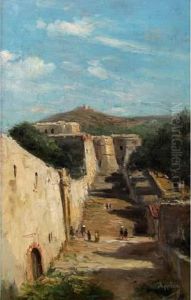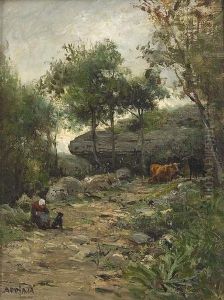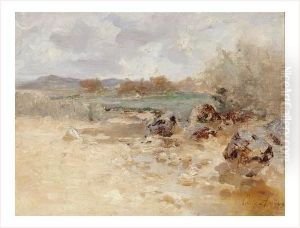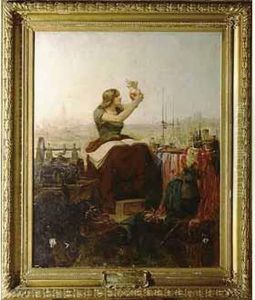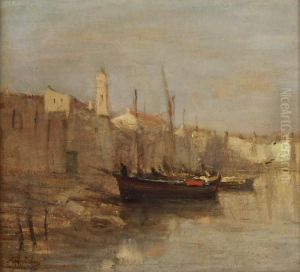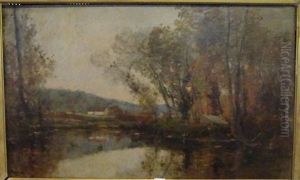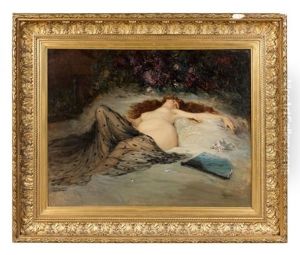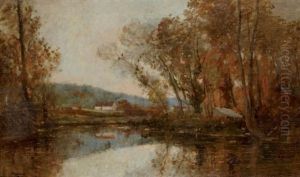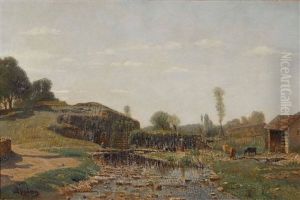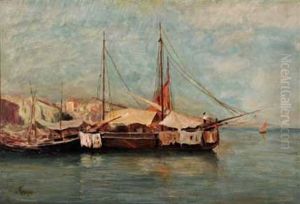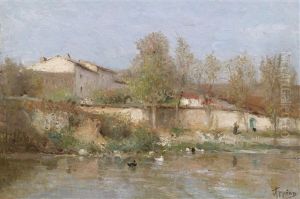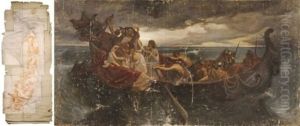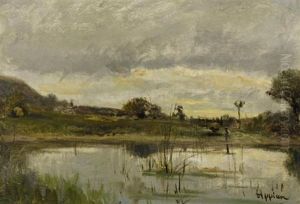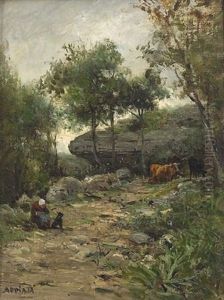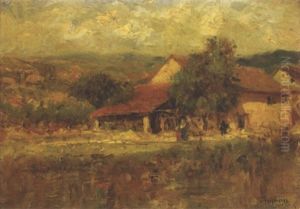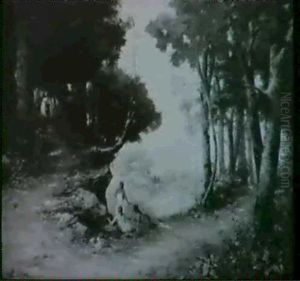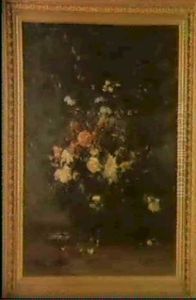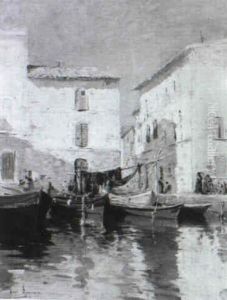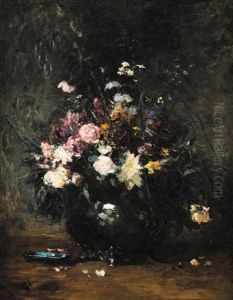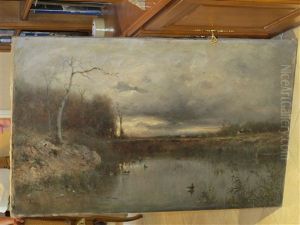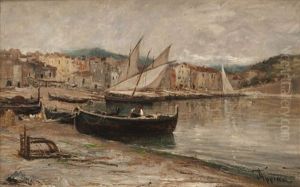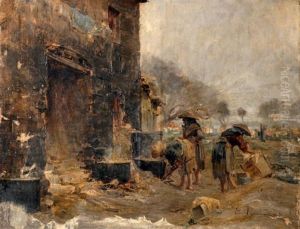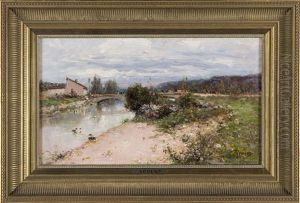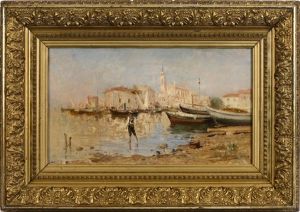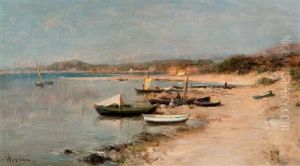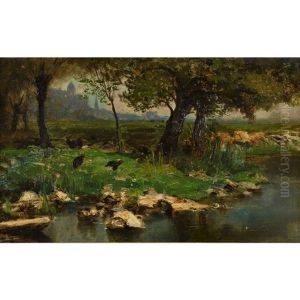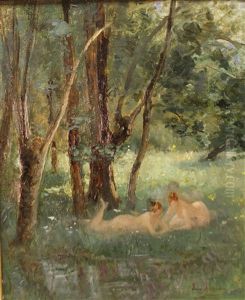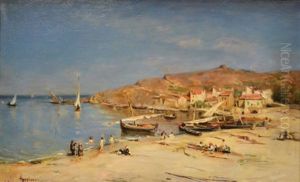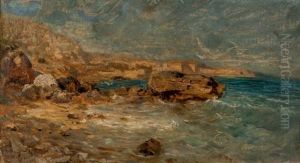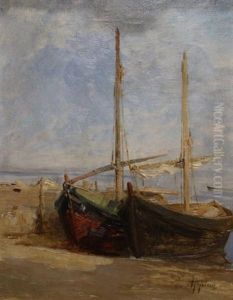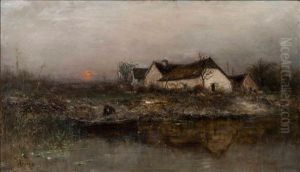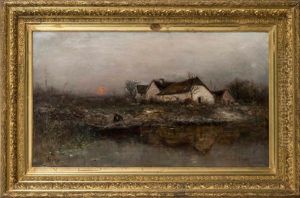Louis Appian Paintings
Louis Appian, born as Louis Paul François Appian in Lyon, France, in 1814, was a distinguished French landscape painter, engraver, and watercolorist known for his atmospheric landscapes and city views. His artistic journey began in the vibrant cultural atmosphere of Lyon, a city with a rich artistic heritage. Initially, Appian trained as an engraver under his father, Jean-Louis Appian, which laid a solid foundation for his meticulous attention to detail and composition. However, his passion for the natural world and landscapes soon led him to pursue painting, where he could more freely express the nuances of light and atmosphere that fascinated him.
Throughout his career, Appian was heavily influenced by the Barbizon School, a movement that emphasized the beauty and authenticity of rural life and landscapes. His works often depicted serene scenes of the French countryside, Italian vistas, and the rugged terrain of the French Alps, capturing the transient effects of light with a delicate and refined palette. Despite the influence of the Barbizon School, Appian developed his own unique style, characterized by a harmonious blend of realism and romanticism. He was particularly admired for his ability to convey the mood and atmosphere of a scene, often portraying the quietude of nature with a profound sense of tranquility and poetic grace.
Appian's talent was recognized early in his career, and he exhibited at the Paris Salon, receiving accolades and medals for his contributions to French art. His works were sought after by collectors and art enthusiasts in France and abroad, securing his reputation as a prominent figure in 19th-century landscape painting. Beyond his paintings, Appian's engravings and watercolors also received critical acclaim for their precision and beauty, further showcasing his versatility as an artist.
Louis Appian passed away in 1898, leaving behind a legacy that continues to be celebrated for its contribution to the landscape genre. His works are preserved in several prestigious institutions, including the Louvre in Paris and the Metropolitan Museum of Art in New York, testament to the enduring appeal and significance of his artistic vision. Appian's dedication to capturing the essence of the natural world, combined with his technical skill and emotional depth, make him a notable figure in the history of French art.
